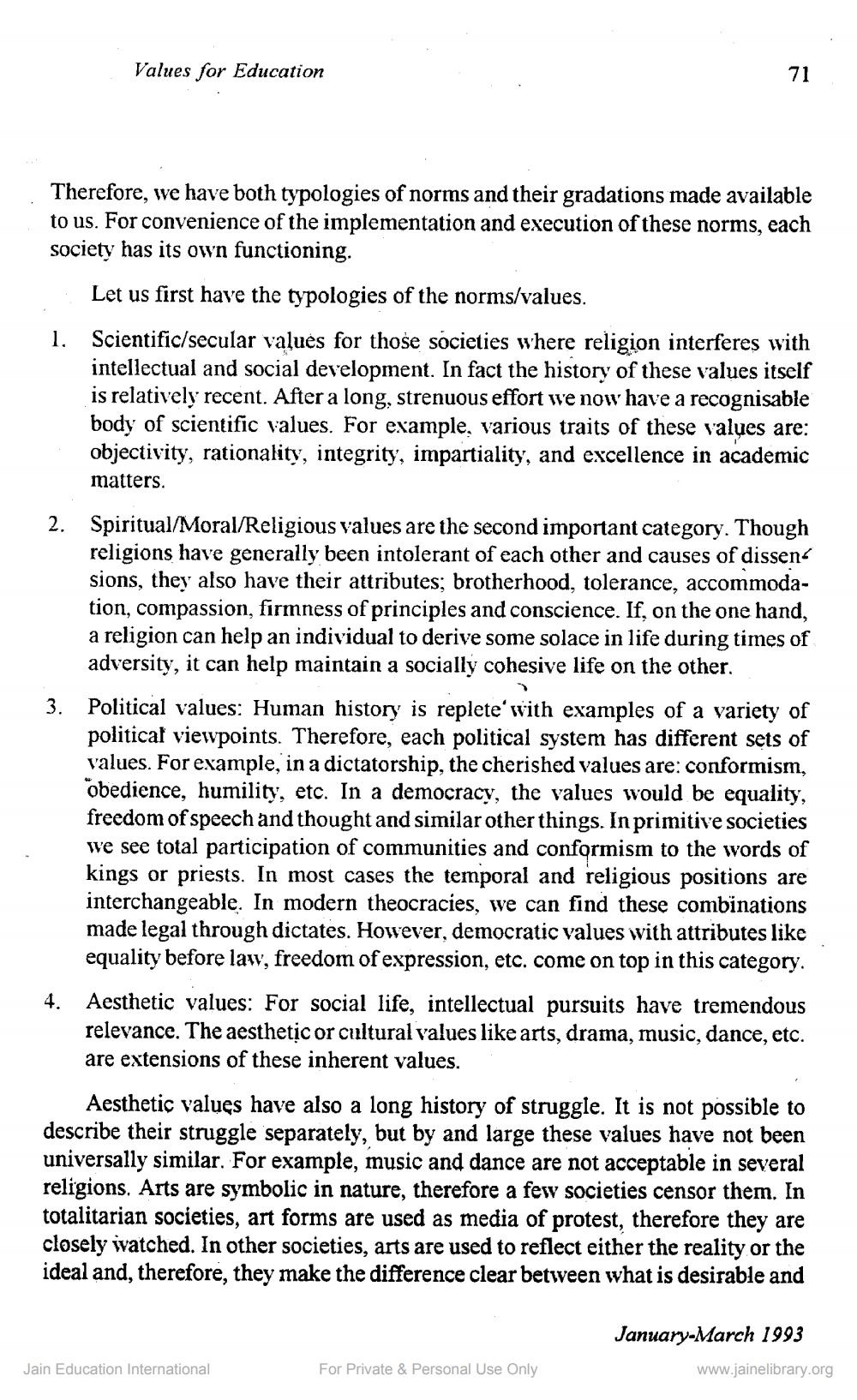________________
Values for Education
Therefore, we have both typologies of norms and their gradations made available to us. For convenience of the implementation and execution of these norms, each society has its own functioning.
Let us first have the typologies of the norms/values. 1. Scientific/secular values for those societies where religion interferes with
intellectual and social development. In fact the history of these values itself is relatively recent. After a long, strenuous effort we now have a recognisable body of scientific values. For example, various traits of these values are: objectivity, rationality, integrity, impartiality, and excellence in academic matters.
Spiritual/Moral/Religious values are the second important category. Though religions have generally been intolerant of each other and causes of dissen sions, they also have their attributes; brotherhood, tolerance, accommodation, compassion, firmness of principles and conscience. If, on the one hand, a religion can help an individual to derive some solace in life during times of adversity, it can help maintain a socially cohesive life on the other.
3. Political values: Human history is replete with examples of a variety of
political viewpoints. Therefore, each political system has different sets of values. For example, in a dictatorship, the cherished values are: conformism, obedience, humility, etc. In a democracy, the values would be equality, freedom of speech and thought and similar other things. In primitive societies we see total participation of communities and conformism to the words of kings or priests. In most cases the temporal and religious positions are interchangeable. In modern theocracies, we can find these combinations made legal through dictates. However, democratic values with attributes like
equality before law, freedom of expression, etc. come on top in this category. 4. Aesthetic values: For social life, intellectual pursuits have tremendous
relevance. The aesthetic or cultural values like arts, drama, music, dance, etc. are extensions of these inherent values.
Aesthetic values have also a long history of struggle. It is not possible to describe their struggle separately, but by and large these values have not been universally similar. For example, music and dance are not acceptable in several religions, Arts are symbolic in nature, therefore a few societies censor them. In totalitarian societies, art forms are used as media of protest, therefore they are closely watched. In other societies, arts are used to reflect either the reality or the ideal and, therefore, they make the difference clear between what is desirable and
January-March 1993
Jain Education International
For Private & Personal Use Only
www.jainelibrary.org




